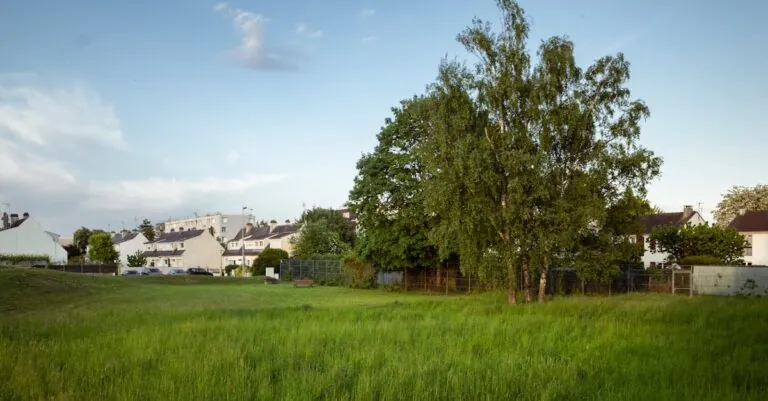Alabama’s housing market is like a box of chocolates—full of surprises and definitely worth exploring. Whether you’re a first-time buyer or a seasoned investor, navigating this landscape can feel like trying to find a needle in a haystack. But fear not! This guide is here to help you dodge the pitfalls and uncover the hidden gems that the Heart of Dixie has to offer.
Table of Contents
ToggleOverview of the Alabama Housing Market
Alabama’s housing market offers diverse opportunities for buyers and investors. Trends reflect active growth across various regions, driven by economic and demographic factors.
Current Trends and Statistics
Recent data shows significant movement within the Alabama housing market. The median home price currently stands at $220,000, showing a 5% increase year-over-year. Inventory levels have decreased by 15%, leading to a more competitive landscape. Homes typically sell within 30 days of listing. Demand remains strong, particularly in suburban areas, as remote work influences residential preferences. Potential buyers should stay informed about local market dynamics to capitalize on evolving opportunities.
Key Cities and Regions
Several cities and regions in Alabama attract attention for their robust housing markets. Birmingham features a diverse selection of homes with prices averaging $210,000. Huntsville boasts rapid job growth and housing starts, with average prices around $250,000. Montgomery offers affordable options, with a median home price of $185,000. Coastal areas like Gulf Shores draw seasonal residents, expanding the market’s appeal. Each location presents unique investment potential, catering to various buyer needs and preferences.
Buying a Home in Alabama
Buying a home in Alabama offers diverse opportunities and financial options. Understanding the local market dynamics helps buyers make informed decisions.
First-Time Homebuyer Programs
Alabama provides various programs specifically designed for first-time homebuyers. The Alabama Housing Finance Authority offers assistance through down payment and closing cost assistance. Income limitations apply, with funds available for low to moderate-income individuals. Programs like the First-Time Homebuyer Program and the Step Up Program target different buyer needs. Participants benefit from competitive interest rates and favorable loan terms.
Financing Options and Mortgages
Numerous financing options exist for homebuyers in Alabama. Conventional loans, FHA loans, and VA loans represent popular choices. Conventional loans require a down payment of at least 3%, while FHA loans mandate a minimum of 3.5%. VA loans provide property financing for eligible veterans with zero down payment. Buyers should consider pre-approval to secure a stronger negotiation position. Various lenders offer competitive rates, making it crucial to compare offers.
Selling a Home in Alabama
Selling a home in Alabama requires a strategic approach. The competitive market necessitates preparation and an understanding of property value.
Preparing Your Home for Sale
First, homeowners should enhance curb appeal with fresh landscaping and a tidy exterior. Next, staging the interior creates a welcoming atmosphere, facilitating buyers’ imaginations. Minor repairs, like fixing leaky faucets and patching walls, boost a property’s appeal. Updating fixtures, such as lighting and cabinetry, can transform spaces at a low cost. Lastly, hiring a professional photographer showcases the home effectively, capturing its best features.
Understanding Market Value
Determining market value relies on recent sales data in the neighborhood. Comparable homes, referred to as “comps,” influence pricing strategies. Current data indicates a median home price of $220,000, reflecting a 5% year-over-year increase. Consulting a local realtor contributes valuable insights and expertise regarding market trends and property evaluations. Sellers should also consider timing; homes typically sell in about 30 days. Adapting to market dynamics ensures the pricing strategy attracts potential buyers quickly.
Rental Market Insights
Alabama’s rental market showcases notable trends and opportunities for investors and renters alike. Understanding average rental prices and popular rental areas can help make informed decisions.
Average Rental Prices
Median rental prices in Alabama reflect a diverse market. For 2023, the average rent stands around $1,200 per month, with variations depending on location and property type. Apartments in urban centers like Birmingham and Huntsville typically command higher prices, while rural areas offer more affordable options. Families or individuals seeking homes might find two-bedroom apartments averaging $1,200 monthly, whereas studios may range from $800 to $1,000. This pricing trend highlights the competitive nature of renting in desirable neighborhoods.
Popular Rental Areas
Several areas in Alabama attract renters due to their amenities and lifestyle. Birmingham offers vibrant cultural scenes and dining options, making it a hotspot for young professionals. Huntsville attracts tech industry workers with its growing job market, exhibiting a consistent demand for rentals. The coastal region, including Gulf Shores, draws vacationers and retirees, resulting in increased rental demand during peak seasons. Montgomery, known for its historical significance, also presents appealing rental properties, particularly for families. These popular rental areas cater to various demographics and lifestyle preferences, contributing to a dynamic rental landscape throughout the state.
Conclusion
Navigating Alabama’s housing market presents a wealth of opportunities for both buyers and sellers. With competitive pricing and a variety of financing options available it’s crucial for individuals to stay informed and adapt to market trends. Whether exploring vibrant urban areas or charming suburban neighborhoods understanding local dynamics can significantly enhance decision-making.
For those looking to invest or find a new home Alabama’s unique offerings make it an attractive destination. As the market continues to evolve staying proactive and leveraging available resources will empower buyers and sellers alike to achieve their real estate goals.




